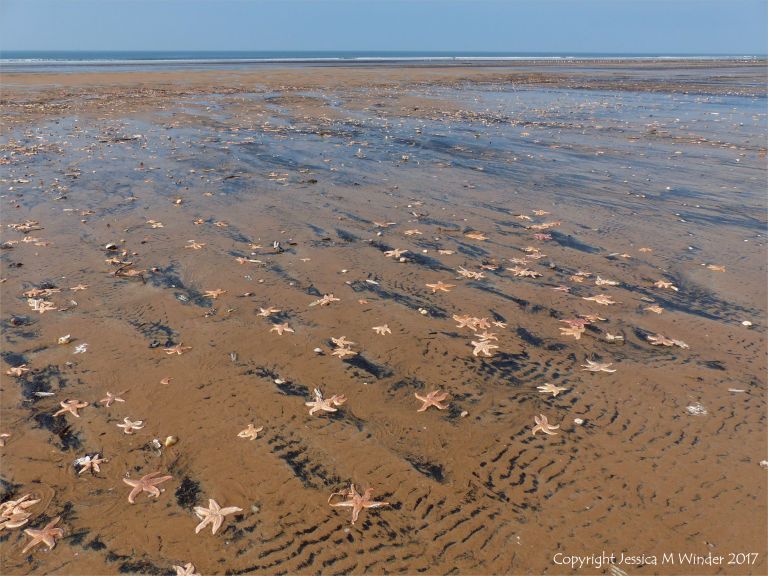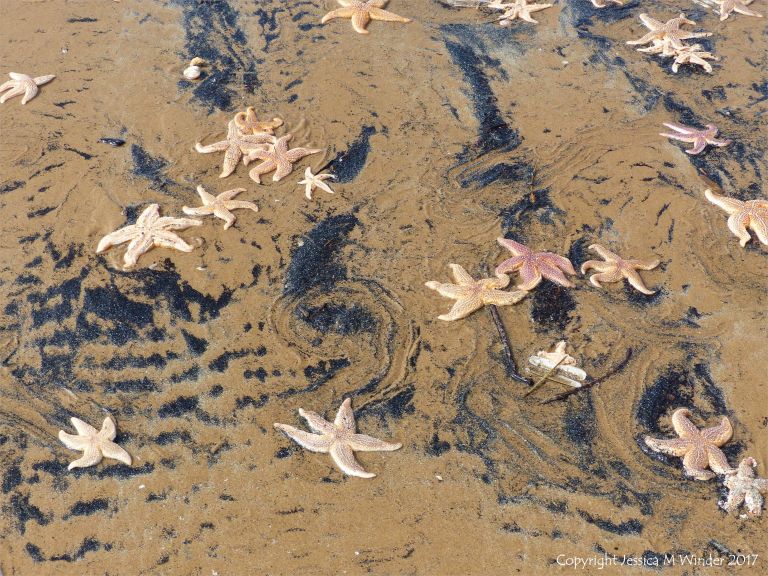As I walked further along the beach from Hill End to Spaniard Rocks, I realised that there were maybe four or five strandlines lying parallel to each other and to the water line. Each line of mainly organic debris was slightly different in its constituents. Similarly, there were changes in the make up and proportions of the animal and plant debris in the strandlines in a linear way as I walked from south to north along the shore. The starfish became less numerous and the numbers of bivalve molluscs and their shells increased,
Most noticeable was the way in which the darker particle component of the strandlines became separated out on the up-shore side of the lines, and formed patterns contrasting with the yellow sand on which it lay. Sometimes there were branching lines of clear spaces, like rivulets running through the black stuff. Sometimes, the black pieces followed and echoed the shallow ripple marks in the sand – either as parallel lines or cross-hatching designs full of beautiful natural abstract compositions. In other places, small obstacles such as seashells had formed little dams to impede the flow of lighter, darker, material as the water that carried it swashed and backwashed over the beach, and this had created distinctive patterns as the water flowed around the barriers.
I was curious about what made up the fine black material responsible for the patterns. I took some samples to look at under the microscope when I got home.



















Poetry, Jessica!
LikeLike
Thank you, Bob.
LikeLike
I saw a black pearl in one of your past entries, Jessica. Do you think that was the coal dust on Rhossili beach?
Bob
LikeLike
Briliantly captured patterns as usual Jessica. Look forward to your investigations with the microscope.
LikeLike
Any small agent of irritation in the shell-creating fleshy mantle of the living oyster can cause a lump or an actual oyster in response to the intruding particle. It might have been a bit of coal dust but equally it could have been a grain of sand or fragment of broken shell. I do not think the colour of the black pearl was caused by coal dust in the water; the entire shell was also blackened. A more likely explanation is that the empty shell with its pearl-like lump were buried for a considerable time deep in the anoxic sediments where the activities of anaerobic bacteria create black iron sulphides that stain buried objects.
LikeLike
Thank you, Adrian. An explanation for the fine black sediment is in the next post.
LikeLike